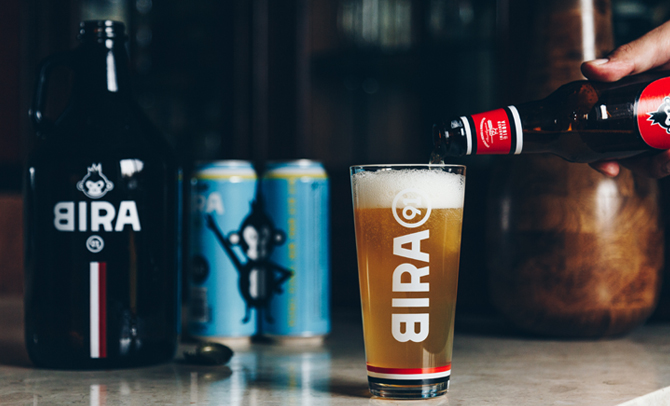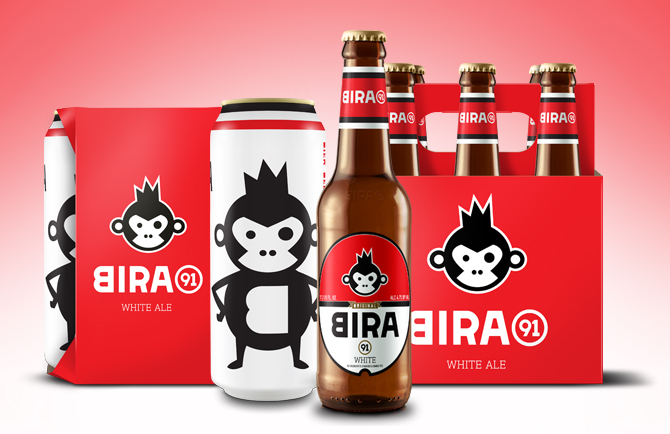
Fueled by $35 million in venture funding from Sequoia Capital, one of Silicon Valley’s most iconic VC firms, India’s B9 Beverages, makers of Bira 91, is on pace to produce an astonishing 300,000 barrels in just its third full year on the market.
Launched in February 2015, Bira 91 has amassed a cadre of millennial consumers throughout India who don’t identify with major brands such as Kingfisher, Budweiser, Heineken and Carlsberg, according to founder Ankur Jain.
“We believe that we have the opportunity to replace Kingfisher as the brand of choice for this generation,” he told Brewbound during an interview at the 2017 National Beer Wholesalers Association convention in Las Vegas.

Those aspirations extend beyond India as well, and Jain’s long-term vision is to build Bira 91, which has quickly grown to more than 300 employees, into an international craft brand for “tech-immersed” millennials across the globe.
“We see a big opening for a global craft brand,” he said. “Bira 91 is a more youthful brand, and something that we think can work well globally, which has always been the intent.”
Currently, 98 percent of the company’s beer is sold throughout India, Jain said, but a more robust U.S. launch is imminent. Bira 91 products are already distributed in New York, where the company self-distributes, and in New Jersey through a trio of wholesalers that includes Peerless Beverage Company, Kramer Beverage, and Shore Point Distributing.
Rollouts in Philadelphia, via Origlio Beverage, and in Boston, via Burke Distributing, are also planned for this fall, Jain added. Launches on the West Coast could follow shortly after.
“At first, we didn’t know where our place would be in the U.S. market,” Jain said of trying to compete against 5,700 other craft breweries. “But what worked for us in India is almost exactly what will work for us in the U.S.”
In India, Bira 91 has executed behind a multi-faceted go-to-market strategy that focuses on delivering creatively branded products, with eye-catching graphics, and pairing “simple, accessible and flavorful” beer styles with spicy food.
“When you look at cuisine trends, they are moving away from bland and toward things that are spicy,” Jain said. “That is authentic to a lot of emerging markets that we want to speak to.”
But much of Bira 91’s success in India, at least on-premise, can be attributed to the $2 million it spent to purchase 1,500 draft systems and install flow meters, which track throughput, for its bar and restaurant clients.
That kind of activity, known domestically as “pay-to-play,” is prohibited in the U.S., and is the most obvious adjustment the company will need to make as it looks to grow to 100,000 barrels of annual sales in the U.S. by 2022.
Nevertheless, Jain is bullish on the opportunity that exists for a beer offering that doesn’t lean on homebrewer founder stories, exotic ingredients, or multiple generations of brewing heritage as its primary selling point.
“Those end up missing the millennial drinker, who may not care about those stories,” he said. “We don’t talk about the hops we use or our origin story. Our brand is more tech-immersed, more fun and more playful, and that is a space we feel we can occupy.”

Jain also believes there’s an opportunity to deliver a consistent craft product to consumers who “may not care as much for local as he or she does for getting an accessible beer that is predictable and not pretentious at the right price.”
And, of course, there are also 2 million Indian consumers in the U.S., by Jain’s count, that don’t “have a craft option to call their own at this point.”
As it launches, the company plans to focus on four “brand storytelling” pillars:
- Pairing beer with spicy food;
- Celebrating and aligning with the hip-hop music scene;
- Connecting with the tech community;
- And creating a beer drinking holiday around April 1, the 91st day of the year.

“When you look at any global city, there is music exploration through hip-hop, a preference for spicy food and consumers who are tech-immersed,” he said.
Bira 91 is currently importing three core products – a blonde lager (4.7% ABV), white ale (4.7% ABV) and an IPA (6.5% ABV) — into the U.S. through MHW, Ltd., but it will begin contract producing with an undisclosed brewing partner in the Northeast next year, Jain said.
Bira 91 has raised a total of $38 million and currently produces beer at two facilities – a 210,000 barrel plant in Indore and a 150,000 barrel plant in Nagpur — both of which the company leases and operates itself. Next quarter, the company will begin leasing a third space that is located in Rajasthan, and is capable of producing as much as 600,000 barrels annually, Jain added.
Outside of the U.S. and India, Bira 91’s long-term plan includes distribution expansions in Singapore, Malaysia, Thailand, and Vietnam, Jain said. He also hopes to take the company public, in India, sometime in the next four years.





